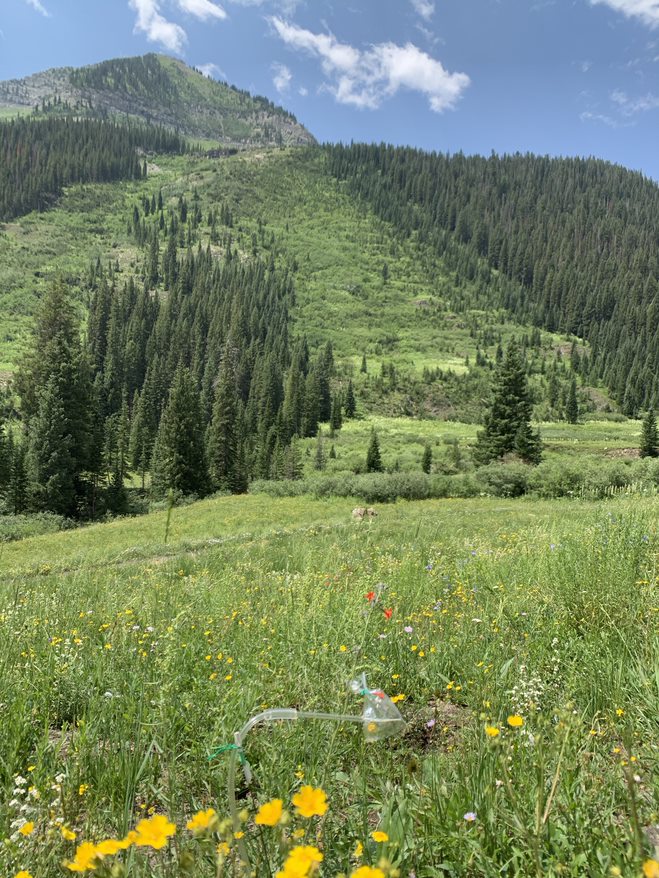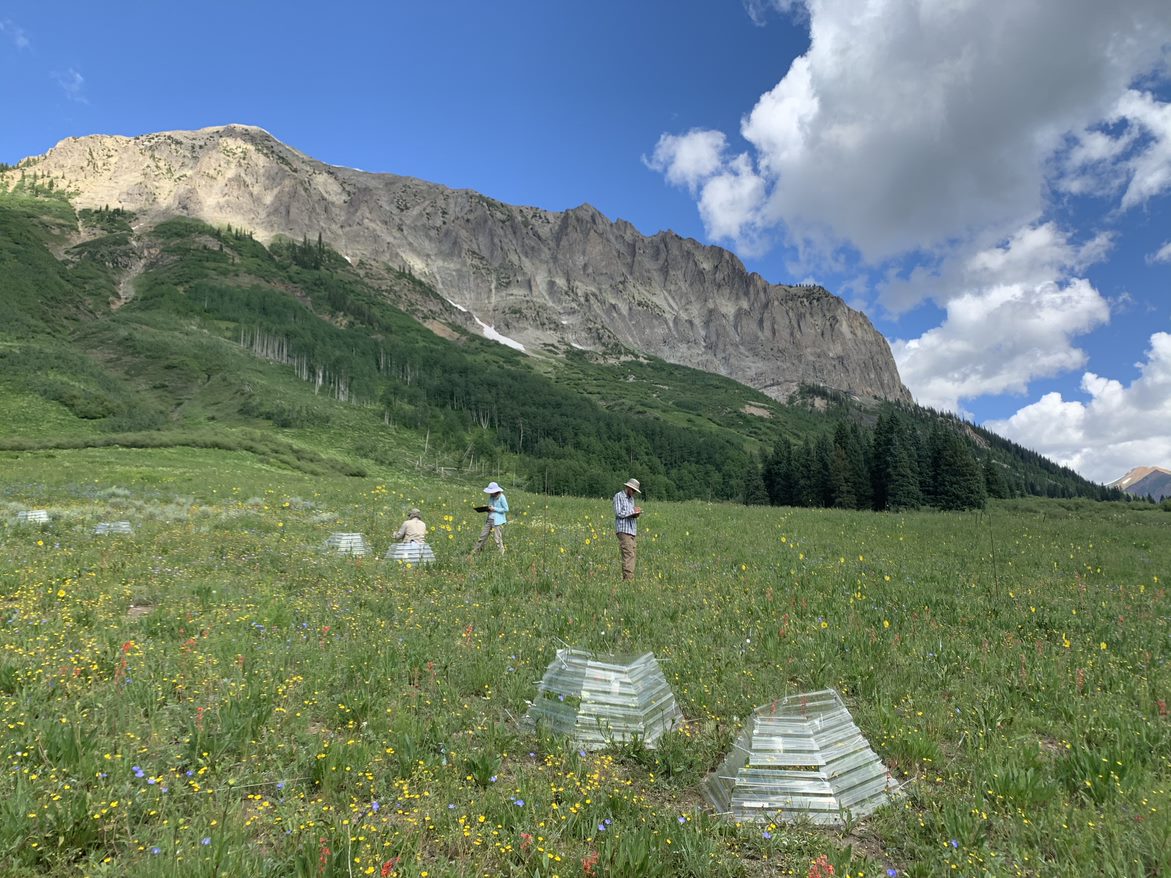Understanding the heat adaptations and phenology of the scarlet gilia at high altitude.
In this series, we will explore student research topics at the Rocky Mountain Biological Laboratory (RMBL) in Gothic, Colorado. Part one focuses on David Hopp’s research into the plant known as “skyrocket”, and his time studying the plant’s structure, smell profile, and its adaptations to heat in a changing world.
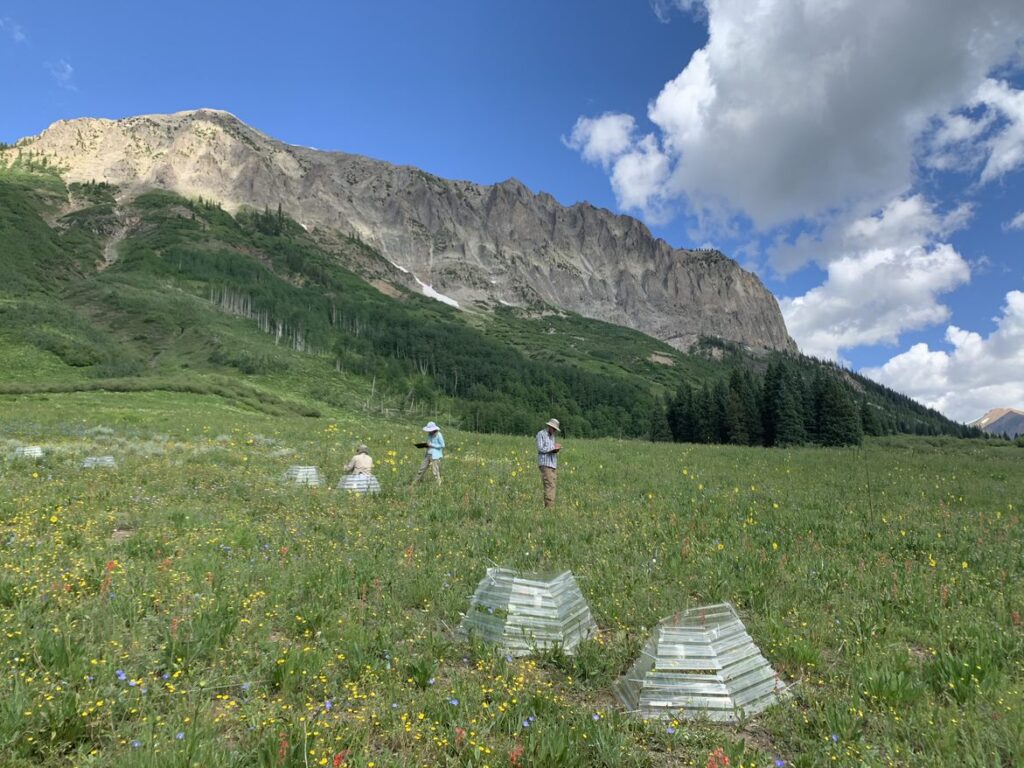
David Hopp is a senior at Western double majoring in Biochemistry and Ecology, by his account one of just two Western students to combine the two fields of study. When Hopp first came to Western, he was set on being an Environment and Sustainability (ENVS) major, but he found greater satisfaction in the realm of scientific research, which satiates his longing for inquiry and discovery, with opportunities provided as a Wildlife Biology major.
Hopp then added biochemistry to his academic plate after Prof. Anne Ryter ignited his passion for chemistry, resolving a poor high school experience. “I kept the wildlife biology [and chemistry majors] not really thinking that I would find a field where they collide…and then I found this project at RMBL and was like ‘this is exactly what I’m looking for,” recalls Hopp.
RMBL’s research roots in Gothic trace back to 1919 with Western College Professor John Johnson’s initial visits, but the biological research center was officially founded in 1928. Since then, RMBL has played host to thousands of distinguished scientists, and operated a multitude of long-term studies that shape how scientists view our changing world. Offering living spaces in Gothic and ready access to pristine, high-altitude environments, RMBL is a unique marvel and resource of the Gunnison Valley.
As a rising senior eyeing his final summer before graduation, Hopp applied for, and was accepted to, the Research Experience for Undergraduate (REU) program, which falls under the purview of the National Science Foundation (NSF). After filling out a questionnaire regarding his interests and experience, Hopp was matched with Prof. Diane Campbell from the University of California-Irvine. Prof. Campbell is an evolutionary ecologist who studies plants and plant evolution, with a particular focus on pollinator relationships and climate change impacts.
The particular subfield of research that Prof. Campbell occupies is sometimes known as “evolutionary rescue”, essentially researching if a particular species will adapt to our world’s changing climate, or fall prey to extinction. Prof. Campbell has been conducting long-term research at RMBL tracing back to the early 1980s, amassing troves of data.
Most climate research that examines plants focuses on plant phenology, or, how a shifting climate impacts plant seasonality and behavior. Prof. Campbell’s work seeks to broaden and expand upon that knowledge, and centers on just one plant species: Ipomopsis aggregata, also known as the scarlet trumpet, the scarlet gilia, and, most excitingly, the skyrocket.
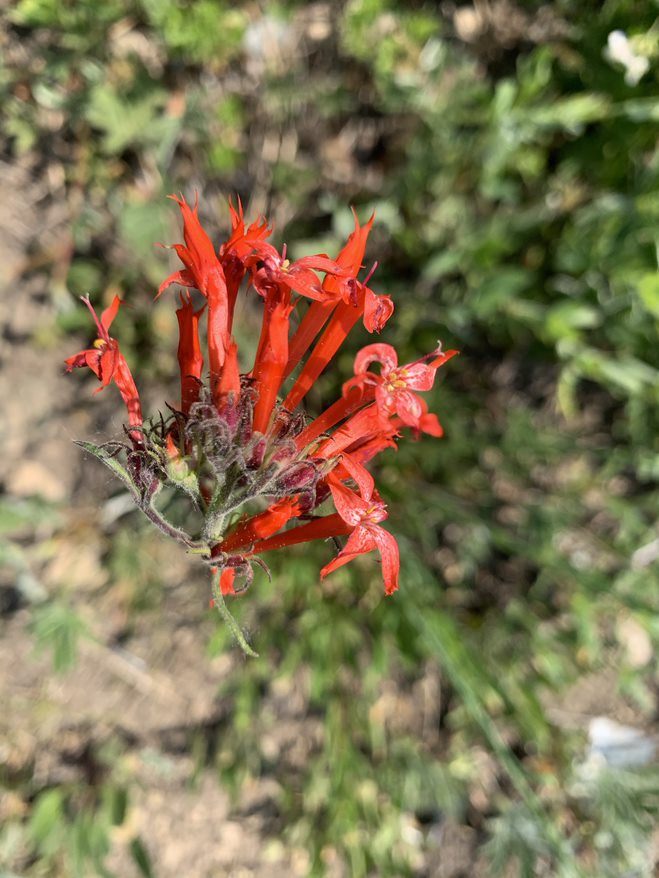
The skyrocket is a striking, biennial flowering plant that is native to the western United States, Canada, and Mexico, and often found at high altitude. The plant’s coloration and height can vary vastly throughout its range and within its seven subspecies, with pink flowers more common in high mesa areas of Colorado, such as Grand Mesa and the Uncompahgre Plateau. Skyrockets are typically pollinated by hummingbirds and long-tongued moths.
In the REU program, students assist their mentors with ongoing research projects, and also carve out particular subprojects that suit their scientific interests. Prof. Campbell’s research involves taking wide swaths of plant-based and environmental data to study how plant morphology, size, appearance, and overall survivability is impacted by shifting climatic factors such as drought and temperature.
Hopp’s research emphasis focuses on how the smell of the skyrockets, determined by the volatile organic compounds (VOCs) present within the plant, change with exposure to heat. To study these effects, heat treatment was provided to an experimental group of flowers using an open-top chamber, which acts as a kind of mini-greenhouse trapping the sun’s heat.
By noon, temperatures inside the chamber were 10 degrees Celsius warmer than in the open air. The science of studying smell is fairly nascent, and Hopp’s study contributes data to a growing field as the technology for measuring smell matures.
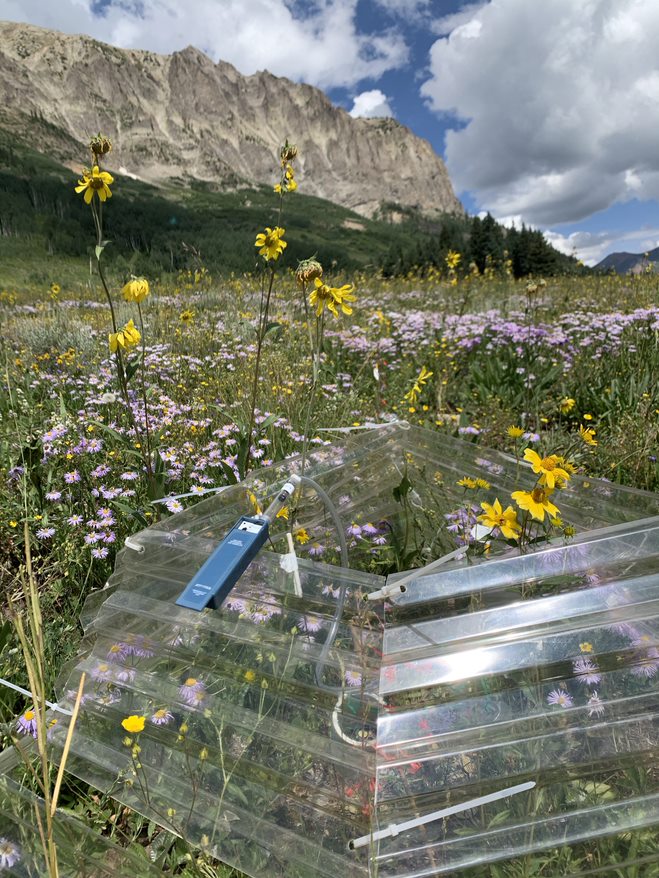
To analyze the plant’s smell composition, Hopp would bag up a flower for 20 minutes, allowing gasses to build up, before cutting a little hole in the bag and using what is essentially a tiny vacuum to suck the air through a small glass tube stuffed with a larger chemical compound for 15 minutes.
“It’s kind of chaotic, because you’ll have three flowers bagged at the end, and you have to manage the time involved, and you have to bounce around…it’s a pretty chaotic process, but it’s [also] pretty fun,” says Hopp. Adding a layer of complexity is that fact that avoiding contamination of the plant’s natural smells at all costs is always top of mind, “You can’t wear sunscreen on your hands, or deodorant, or any kinds of perfumes, [because] any scent can contaminate [the samples],” adds Hopp.
After the tubes have been prepared, they are taken to a device called a gas chromatography mass spectrometer (GC-MS), which separates chemical compounds individually by their characteristics. The GC-MS fragments the compounds, identifying what compounds they are, and quantifying their amounts.
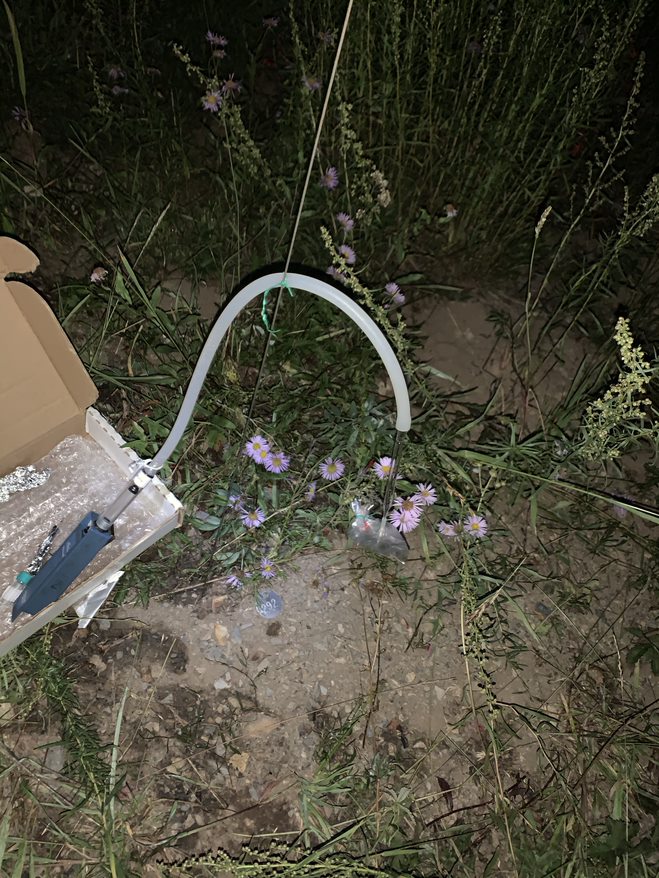
Hopp notes that researching smell profiles of plants subject to changing environmental conditions is quite novel and opens up gateways to new lines of inquiry of interest to individuals like himself who are dually focused on ecology and chemistry. “For example, there are flies that parasitize the [plant’s] seeds, so I’m really interested in looking at how the difference in smells impacts how prevalent the fliers are. We have that data, now we just have to analyze it,” says Hopp.
As part of closing out his REU program, Hopp wrote a paper for RMBL as a condition of his position. Further efforts to publish Hopp and Prof. Campbell’s work are underway but have yet to be completed. Although Hopp’s summer research data did not offer any immediately revelatory findings, his data and analysis will nevertheless contribute to a growing field of research and provide a source of invaluable historical data (a specialty of RMBL).
One interesting trend Hopp discovered was that the skyrocket’s flowers actually grew larger in the heat-treated individuals than in those exposed to natural conditions. “Largeness of flowers is a very attractive quality: hummingbirds come to bigger flowers. And so, the flowers that were treated with heat were actually more attractive to the hummingbirds, [which was the] opposite of what we were expecting,” notes Hopp, who adds that the early research suggests the skyrocket may actually benefit from increased heat.
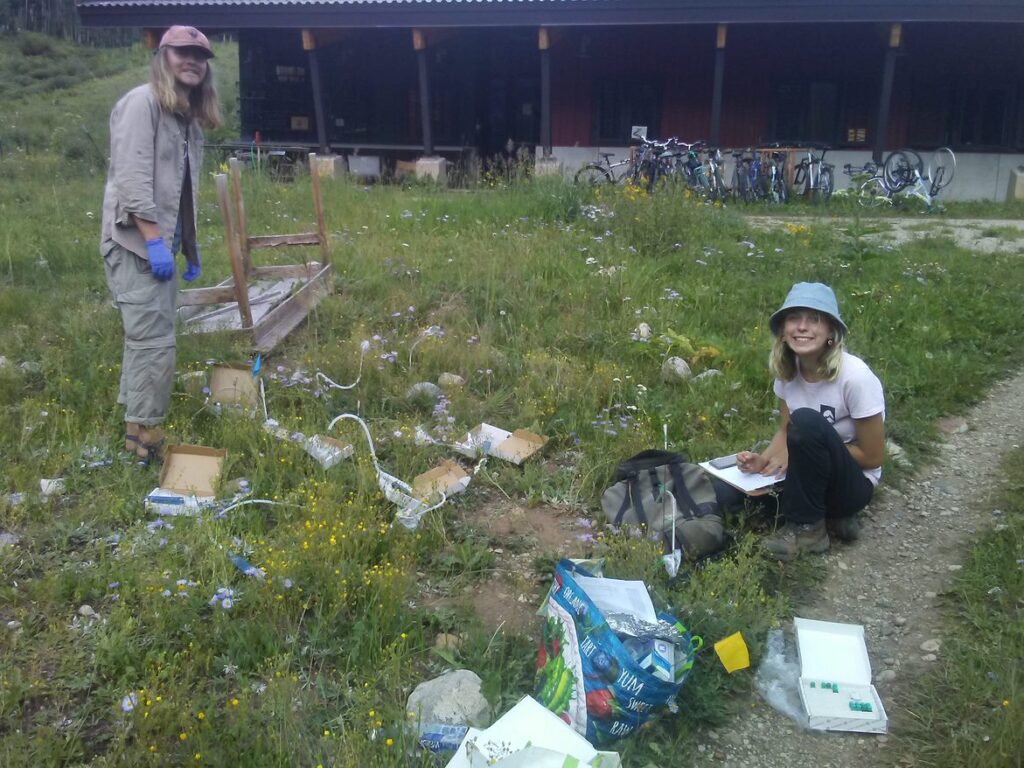
One of Hopp’s lingering research questions concerns the impacts on hummingbirds. Recent research has unveiled that many birds have significantly keener senses of smell than was originally thought, although assessing the sense of smell of hummingbirds remains a barren research topic. “If hummingbirds can’t smell at all, then that would mean that all these smells coming from the flower are strictly defensive, defending from insects, herbivores, or [other species]”, says Hopp.
But if hummingbirds have a stronger sense of smell than originally hypothesized, it’s possible that the skyrocket could be utilizing smells to lure the three separate species of hummingbird which pollinate the plant across its range. The calliope hummingbird, a small, rare species that ranges from three to four inches long (and weighing just two or three grams), relies on skyrockets as a critical food source on its migration pathway. Understanding the future of the skyrocket is essential to understanding the future of the interlinked broadtail, rufus, and calliope hummingbirds.
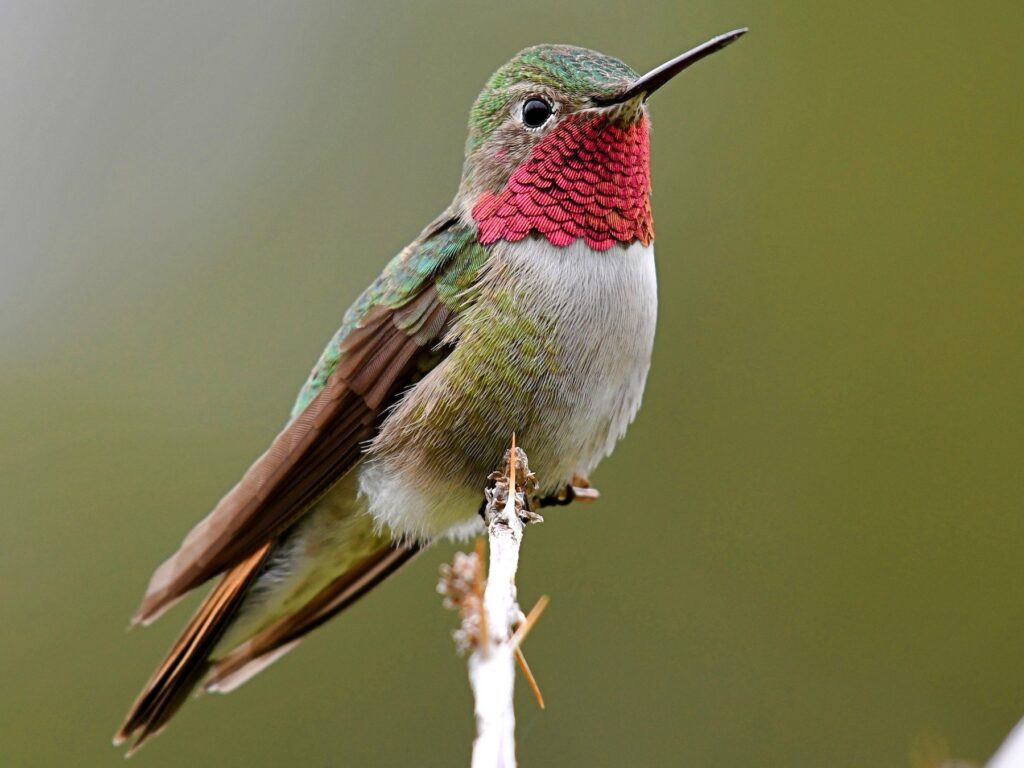
Gauging hummingbirds’ sense of smell, tested by applying additional smell compounds to the plants, will likely serve as Hopp’s research when he returns to RMBL in the summer of 2022. Hopp adds that research prospects are rich in the realm of studying how animals interact with the chemical compounds that produce smells.
Hopp’s RMBL experience has been transformative in more ways than one. The benefits to his career and scientific development are obvious, but other impacts are potentially more lasting. “RMBL is not all about research. I met so many people that I think are going to be lifelong friends. I had so much fun up there, just messing [around] with people who had similar interests,” says Hopp of the social network of biologists. “You can go and sit down with somebody that has a paper that’s been cited 300 times…and they’re just normal people up there,” adds Hopp.
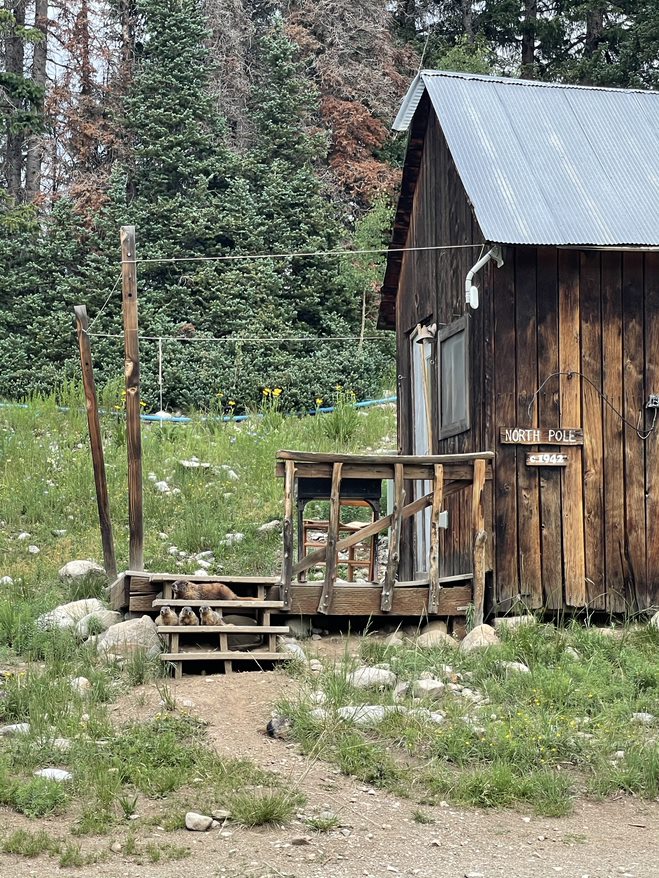
Looking ahead, Hopp is excited to further his career in research and explore opportunities in the niche between ecology and chemistry. After graduation in May, he is planning to take a year off from school before exploring his options for graduate schools.
Options on the table for researchers looking to delve into the crossover between chemistry and ecology are fairly slim currently, but the field is growing as climate change becomes an increasingly pertinent topic. Outside of Prof. Campbell’s lab in Irvine, Hopp cites Cornell University and a research university in Norway as the best options to suit his interests.
Stay tuned for future editions of Research Rumblings!
